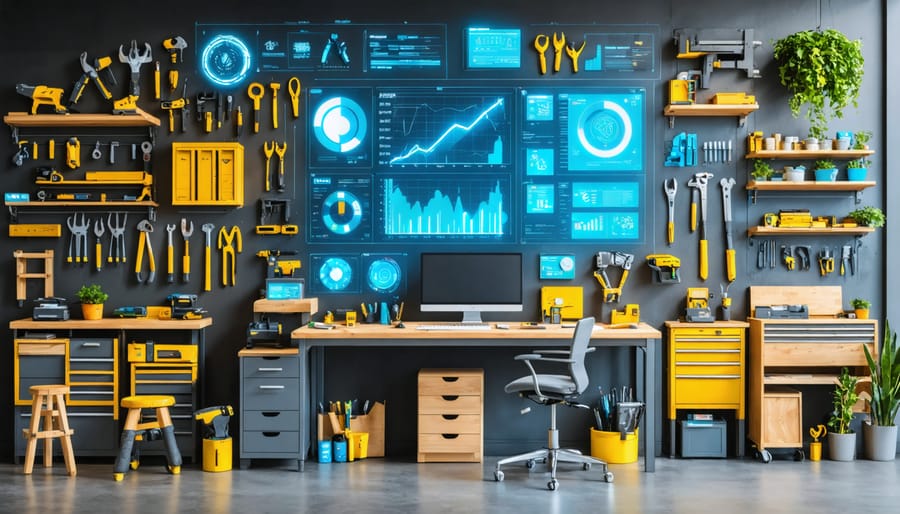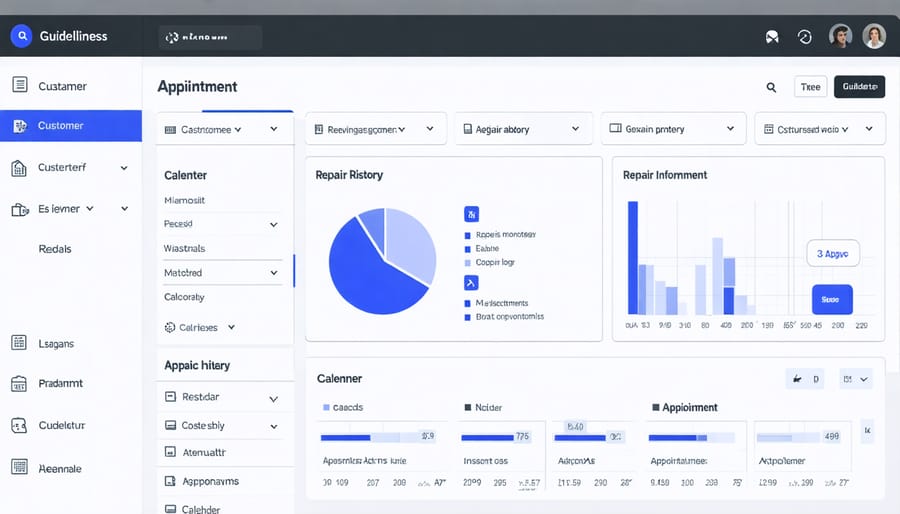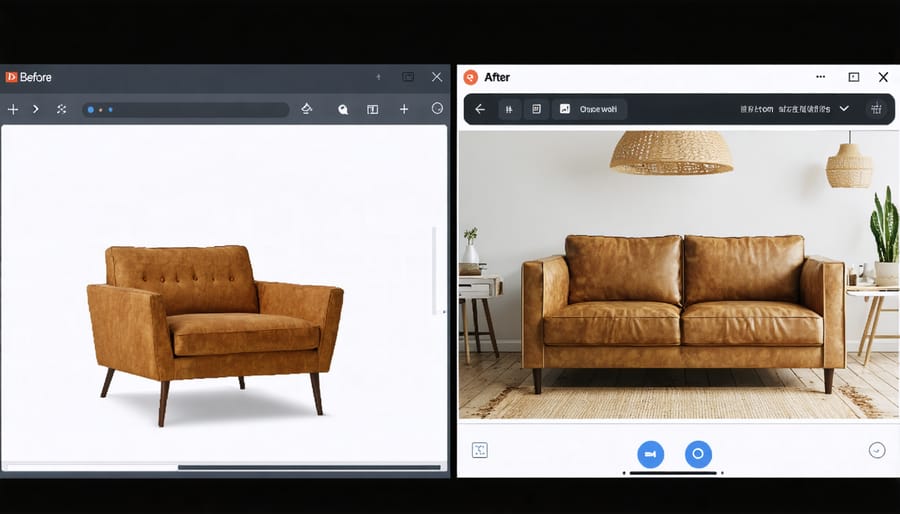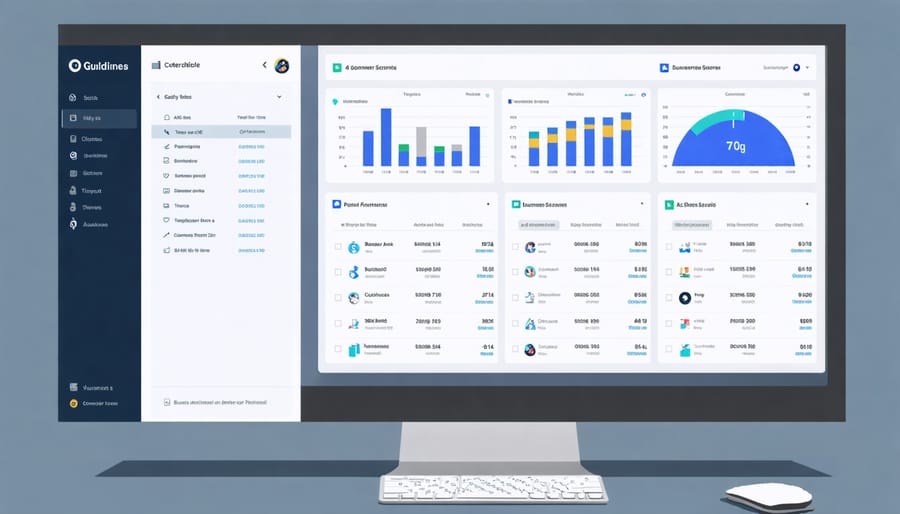
Transform your furniture repair business operations with a robust customer relationship management system that streamlines client interactions, automates follow-ups, and drives repeat business. Modern CRM solutions revolutionize how repair businesses track service histories, manage appointments, and maintain ongoing relationships with property managers and homeowners. By centralizing customer data, service records, and communication channels, furniture repair companies gain unprecedented insight into client preferences, repair patterns, and satisfaction levels. This technological backbone empowers businesses to deliver personalized service experiences, anticipate maintenance needs, and build lasting relationships that translate into sustained growth and increased referrals. From scheduling routine touch-ups to managing complex restoration projects, a well-implemented CRM system serves as the cornerstone of efficient, customer-centric operations in today’s competitive furniture repair marketplace.

A centralized customer information management system serves as the backbone of successful furniture repair operations, storing vital customer data in an easily accessible digital format. By maintaining detailed repair histories, businesses can quickly reference past work, understand recurring issues, and provide more informed solutions for returning customers.
The system tracks customer preferences, such as preferred appointment times, specific material sensitivities, or special care instructions for antique pieces. This attention to detail demonstrates professionalism and creates a personalized experience that customers appreciate. For instance, if a client previously specified using hypoallergenic cleaning products, this information is readily available for future service calls.
Contact information management becomes seamless with automated updates and verification systems. When customers move or change phone numbers, the CRM ensures these changes are reflected across all touchpoints. This prevents communication gaps and reduces the likelihood of missed appointments or delayed service delivery.
The system also maintains records of customer communication preferences – whether they prefer email, text, or phone calls – and automatically sends notifications through their chosen channel. This strategic approach to information management helps build lasting relationships while streamlining administrative tasks.
For multi-location furniture repair businesses, this centralized system ensures consistency in customer service across all branches, with authorized staff members accessing the same up-to-date customer profiles and service histories.
The automated appointment scheduling feature in a CRM system revolutionizes how furniture repair businesses handle bookings and manage their daily operations. By implementing smart scheduling tools, businesses can streamline operations and eliminate the common headaches of manual scheduling.
This intelligent system automatically checks technician availability, considers travel time between appointments, and accounts for the specific skill sets required for different repair jobs. When a customer requests service, the CRM instantly identifies the most suitable time slots and technicians, reducing the back-and-forth communication typically needed to confirm appointments.
The system also sends automated reminders to both customers and staff, significantly decreasing no-shows and last-minute cancellations. For instance, a restoration workshop using automated scheduling reported a 40% reduction in missed appointments within the first month of implementation.
Real-time calendar updates ensure that all team members stay synchronized, preventing double-bookings and scheduling conflicts. The system can even adjust schedules automatically when emergency repairs arise, maintaining efficiency without disrupting the entire day’s workflow.
For customers, the experience becomes seamless as they can book appointments online at their convenience, select preferred time slots, and receive immediate confirmation. This level of automation not only saves valuable administrative time but also enhances customer satisfaction through professional and reliable service delivery.
A robust digital documentation system within your CRM revolutionizes how furniture repair businesses manage visual records and service details. By implementing a systematic approach to managing repair estimates, before/after photos, and detailed repair notes, you create a valuable resource that benefits both your team and customers.
High-quality before and after photos serve as powerful testimonials to your craftsmanship while providing essential reference points for future repairs. The CRM allows you to organize these images systematically, making it easy to showcase your work to potential clients or reference similar repairs. This visual documentation also proves invaluable when discussing project outcomes with customers or handling any post-service queries.
Repair notes within the system create a comprehensive service history for each piece of furniture. Technicians can record specific techniques used, materials applied, and any particular challenges encountered during the restoration process. This detailed documentation helps maintain consistency in service quality and serves as a knowledge base for training new team members.
The digital estimate feature streamlines the quotation process by incorporating historical pricing data and standardized service packages. This ensures pricing consistency across similar projects while allowing for customization based on specific repair requirements. The system can also track estimate approvals, modifications, and final project costs, providing valuable data for business analysis and future pricing strategies.

Real-time progress updates transform how furniture repair businesses communicate with their customers, creating transparency and trust throughout the repair process. A CRM system enables automated status notifications that keep customers informed at every stage, from initial assessment to completion.
When a repair technician updates the job status in the system, customers can receive instant notifications via email or text message. For example, they’ll know when their furniture has been received at the workshop, when repairs begin, and when specific milestones are reached. This proactive communication eliminates the need for customers to call repeatedly checking on their items.
The system can be configured to send detailed updates including photos of the repair progress, estimated completion times, and any additional recommendations discovered during the process. This visual documentation not only keeps customers engaged but also helps them understand the value of the work being performed.
For businesses, these automated updates reduce the time staff spend answering status inquiries while improving customer satisfaction. The system can also flag delays or issues immediately, allowing managers to address problems before they impact customer expectations.
Many successful furniture repair businesses report that implementing real-time progress updates has led to higher customer satisfaction scores and increased referrals. Customers particularly appreciate being able to track their repairs through a customer portal, giving them 24/7 access to their project’s status and maintaining peace of mind throughout the process.
A well-implemented CRM system transforms customer history data into valuable service opportunities by analyzing patterns in furniture maintenance and repair needs. By tracking past services, materials used, and customer preferences, the system can automatically generate timely maintenance recommendations tailored to each client’s specific furniture collection.
For example, when the system notices a customer previously required leather conditioning for their sofa, it can schedule reminders for follow-up treatments at optimal intervals. These proactive suggestions help prevent deterioration while demonstrating attentive service that customers appreciate.
The system also identifies cross-selling opportunities based on complementary services. If a customer has antique wooden furniture, the CRM might suggest specialized preservation treatments or protective measures during seasonal changes. For commercial clients with high-traffic furniture, the system can recommend preventive maintenance schedules that align with their usage patterns.
These personalized recommendations are delivered through automated yet personalized communications, such as email notifications or text messages, at the most relevant times. For instance, sending waterproofing treatment suggestions before rainy seasons, or upholstery cleaning reminders after major holidays when furniture typically experiences heavy use.
By leveraging customer data to provide targeted maintenance suggestions, businesses can showcase their expertise while helping clients protect their investments. This proactive approach not only drives additional service opportunities but also positions the company as a trusted advisor in furniture care.
Customer feedback integration in a CRM system serves as a vital tool for furniture repair businesses to understand and improve their service quality. By systematically collecting customer satisfaction data through surveys, reviews, and direct feedback, businesses can identify patterns and address concerns proactively.
Modern CRM platforms enable automated feedback collection after service completion, allowing customers to rate their experience and provide detailed comments about the repair work. This real-time feedback helps businesses maintain high service standards and quickly address any issues that arise.
The system can analyze feedback data to generate valuable insights, such as common repair concerns, technician performance metrics, and overall customer satisfaction trends. For instance, if multiple customers mention lengthy wait times for antique furniture repairs, management can adjust scheduling practices or enhance resource allocation accordingly.
Integration of customer testimonials and before-after photos within the CRM provides social proof for potential clients while helping track successful restoration projects. This visual documentation becomes particularly valuable when demonstrating expertise in specific types of repairs or showcasing complex restoration work.
The feedback loop also enables personalized follow-up communications, ensuring customers feel valued and heard. By maintaining detailed records of customer preferences and previous interactions, businesses can tailor their services to meet specific expectations, leading to increased customer loyalty and positive word-of-mouth referrals.

A robust CRM system transforms raw data into actionable insights through comprehensive performance analytics and reporting features. By tracking key metrics like response times, customer satisfaction scores, and service completion rates, furniture repair businesses can make informed decisions about their business growth strategies.
The reporting dashboard provides real-time visibility into essential performance indicators, including customer retention rates, average repair ticket values, and technician productivity. These insights help identify trends in service requests, peak business periods, and popular repair services, enabling better resource allocation and inventory management.
Custom reports can track the effectiveness of marketing campaigns, helping businesses understand which channels bring in the most valuable customers. The system can also monitor customer feedback patterns, highlighting areas where service quality can be improved or where additional training might be needed.
By analyzing historical data, businesses can predict seasonal demands, optimize pricing strategies, and identify opportunities for service expansion. The ability to generate detailed reports on customer preferences and behavior patterns helps in developing targeted marketing campaigns and personalized service offerings, ultimately driving higher customer satisfaction and increased revenue.
A robust CRM system proves invaluable when managing multiple furniture repair locations, enabling seamless coordination and standardized service delivery across different sites. By centralizing customer data and service records, technicians at any location can instantly access repair histories, ensuring consistent quality and personalized service regardless of which branch customers visit.
The system allows regional managers to monitor performance metrics across locations, identifying top-performing branches and areas needing improvement. Real-time scheduling capabilities help balance workload distribution, ensuring optimal resource allocation and preventing service bottlenecks at busy locations.
For multi-location operations, inventory management becomes streamlined as the CRM tracks materials and supplies across all sites. This visibility helps prevent stockouts and enables efficient transfer of resources between locations when needed. The system also standardizes pricing and service offerings, maintaining consistency while allowing for location-specific adjustments based on local market conditions.
Customer communication remains unified across all branches, with automated appointment reminders and follow-ups maintaining the same professional tone regardless of location. This consistency in communication strengthens brand identity and customer trust, while detailed reporting capabilities provide valuable insights into regional trends and customer preferences, enabling data-driven decisions for expansion and service improvements.
In today’s competitive furniture repair and restoration market, implementing a CRM system is no longer just an option – it’s a necessity for sustainable growth and exceptional customer service. The benefits of a well-implemented CRM system are clear and measurable: streamlined operations, enhanced customer satisfaction, increased repeat business, and improved team coordination.
By centralizing customer data, repair histories, and communication records, businesses can provide more personalized service while reducing response times. The ability to track customer preferences, maintain detailed repair records, and automate follow-up communications has proven invaluable for furniture repair companies of all sizes.
The return on investment is particularly compelling when considering the reduced administrative burden, fewer missed opportunities, and strengthened customer relationships. Successful furniture repair businesses have reported significant improvements in customer retention rates and referral business after implementing CRM solutions.
For those yet to adopt a CRM system, the time to act is now. Start by evaluating your current customer management processes and identifying areas where automation and better organization could make an impact. Choose a CRM solution that aligns with your business size and goals, and remember that the initial investment in time and resources will pay dividends through improved efficiency and customer satisfaction.
Make the strategic decision to embrace CRM technology – your customers, team, and bottom line will thank you for it.